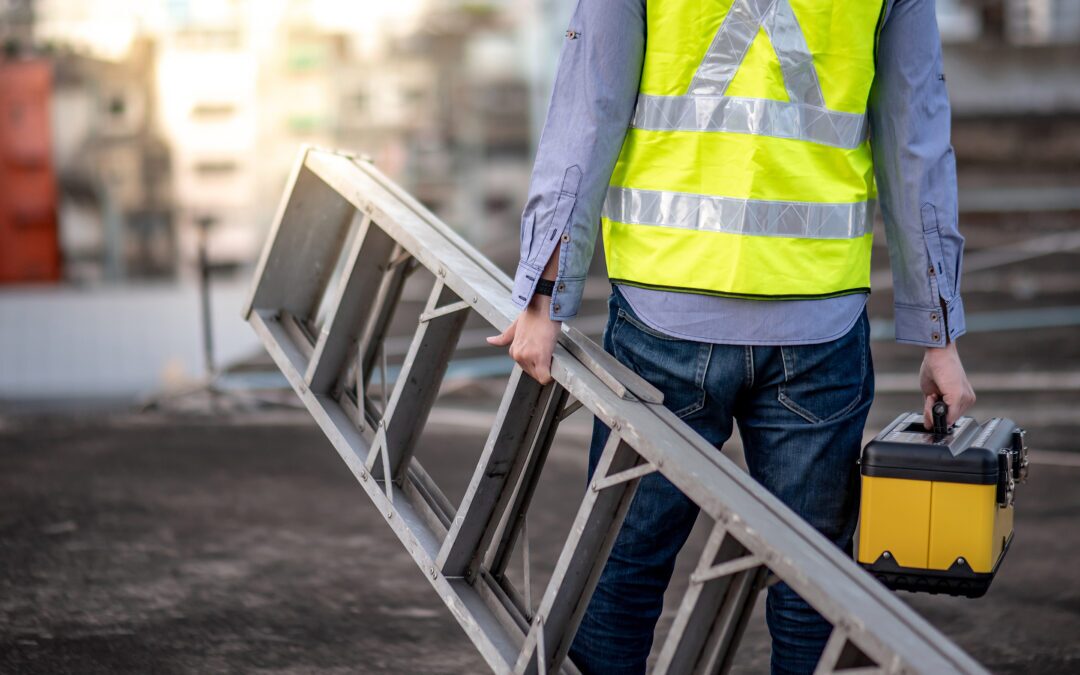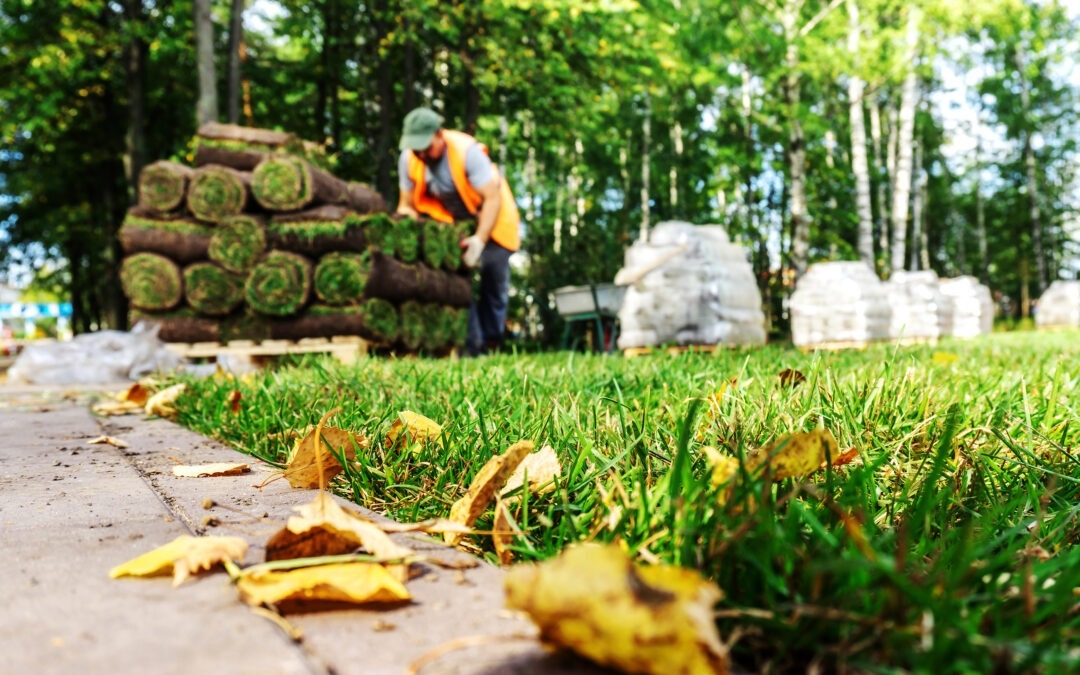Landscape contractors face the risk of serious injuries and falls on even small-scale projects. Insurance agents who understand these risks can help their clients protect their crews and their bottom line.
Sun, soil, and sweat. Pretty basic, right? While landscaping might sound like one of the more straight-forward trades, the numbers tell a different story. The Bureau of Labor Statistics (BLS) recorded 102 deaths among landscaping and groundskeeping workers in 2023, a rate that consistently ranks among the highest for service occupations. Add in thousands of non-fatal injuries every year, and the picture becomes clear: this is hard, hazardous work.
For agents and brokers who serve artisan contractors, those statistics shape every renewal conversation. Understanding where and why these injuries happen can help you guide clients toward safer practices, lower claim frequency, and more favorable terms.
Why Landscaping Is Riskier Than It Looks
What drives the high injury rate isn’t one big hazard, but the combination of physical, environmental, and mechanical pressures that stack up on every jobsite:
- Physical strain: Crews spend hours lifting heavy materials, operating machinery, and working in awkward postures.
- Environmental exposure: Jobsites change daily, with slopes, uneven ground, and unpredictable weather.
- Tool hazards: Mowers, trimmers, chippers, and chainsaws all introduce cut, amputation, and struck-by risks.
- Small-business factor: Many landscaping companies are lean operations with rotating crews, which makes consistent safety training harder to sustain.
According to the Occupational Safety and Health Administration (OSHA), core hazards for landscaping and horticultural services include lifting injuries, cuts and amputations, slips and falls, equipment accidents, chemical exposure, and heat stress. For agents, that means even modest landscaping accounts may carry higher-than-expected exposure and deserve the same attention you’d give to heavy construction risks.
Breaking Down the Most Common Landscaping Injuries
Overexertion & Musculoskeletal Injuries
Lifting materials, pushing heavy mowers, and repetitive bending lead to chronic back, knee, and shoulder strain. NIOSH identifies overexertion and struck-by events as top causes of serious injuries among landscape workers. Regular training, job rotation, and ergonomic tools can dramatically cut claim frequency.
Cuts, Lacerations & Amputations
From mower blades to hedge trimmers, sharp tools make lacerations and amputations a constant risk. OSHA lists cuts and amputations among top landscaping hazards. Agents should ask clients how often guards, blades, and PPE are inspected, and whether safety briefings happen before seasonal ramps.
Slips, Trips, & Falls
Uneven ground, wet grass, and steep slopes create fall hazards. The BLS notes falls on the same level and slips without a fall as leading causes of time-off injuries in landscaping. Even minor falls can escalate into lost-time claims and higher premiums.
Struck-By & Equipment-Related Incidents
Flying debris, backing vehicles, and moving machinery account for a large share of fatalities. Proper training on blind-spot awareness, lockout procedures, and maintenance schedules can save both lives and insurance dollars.
Animal, Insect, & Environmental Exposures
Bites, stings, and allergens, along with extreme weather, are everyday realities. OSHA recently emphasized heat and insect-related hazards as emerging concerns for outdoor workers.
Heat Stress & Chemical Exposure
High heat, pesticides, and fertilizers pose dual threats. OSHA’s national campaign on heat stress notes that landscape workers are among those most frequently hospitalized for heat-related illness. Agents should encourage clients to establish hydration, shade, and chemical-handling protocols.
Checklist: Questions to Uncover Risk With Landscaping Clients
When it’s time to evaluate a landscaping account, these questions can help you uncover hidden exposures, gauge a client’s risk mitigation profile, and build a stronger story for underwriters:
- How are crews trained on lifting and equipment use?
- Are daily equipment inspections and guard checks documented?
- What protocols are in place for slopes, uneven ground, or wet conditions?
- Do you have a written heat-stress policy (breaks, shade, hydration)?
- How are fertilizers and pesticides stored and applied?
- How do you log and review near-misses or minor injuries?
How MiniCo Helps You Tell the Whole Story for Landscaper Safety
MiniCo’s exclusive Landscaping Insurance program includes a wide range of target classes from lawn maintenance to hardscape installation. With general liability, inland marine, property, and excess liability options, MiniCo builds coverage around real-world exposures like equipment, chemicals, and environmental risks.
Because MiniCo’s team maintains close relationships with its program markets, they understand that a clean loss run is built on safety, documentation, and discipline. When you bring clients who can show how they address these common injuries, MiniCo can advocate for enhanced coverage limits and better policy terms.
NOTE: MiniCo’s exclusive Landscaping program is available in Arizona, California, and Nevada. Contact MiniCo for updated availability.
FAQ: Common Agent / Client Questions About Landscaping Insurance
Isn’t landscaping less hazardous than other trades?
Not necessarily. Fatality rates for landscape workers remain among the highest in the service sector, driven by equipment and environmental exposures.
What injuries drive most claims?
Sprains, strains, cuts, slips, struck-by accidents, and heat stress top the list year after year for claims.
Do small landscaping businesses need formal safety programs?
Yes. OSHA expects hazard management regardless of size, and underwriters look favorably on any structured safety documentation.
How does this affect insurance costs?
Lower claim frequency translates directly to lower premiums and broader carrier appetite—proof that safety pays.
Help Your Landscaping Clients Turn Risk Into Advantage
Use this insight to initiate more in-depth safety conversations with your landscaping clients. Then bring their accounts to MiniCo for a customized quote that acknowledges documented risk mitigation efforts. Connect with MiniCo’s team today to learn more.
NOTE: MiniCo’s exclusive Landscaping program is available in Arizona, California, and Nevada. Contact MiniCo for updated availability.




